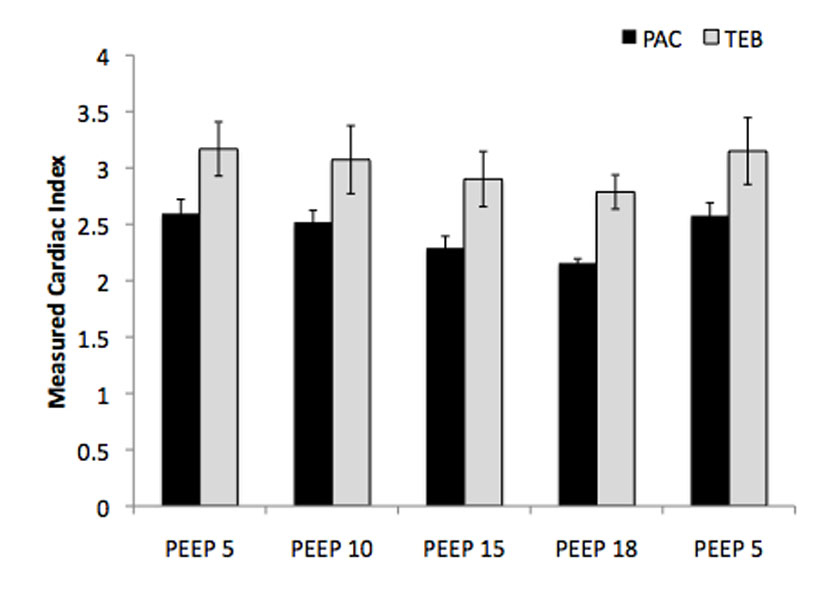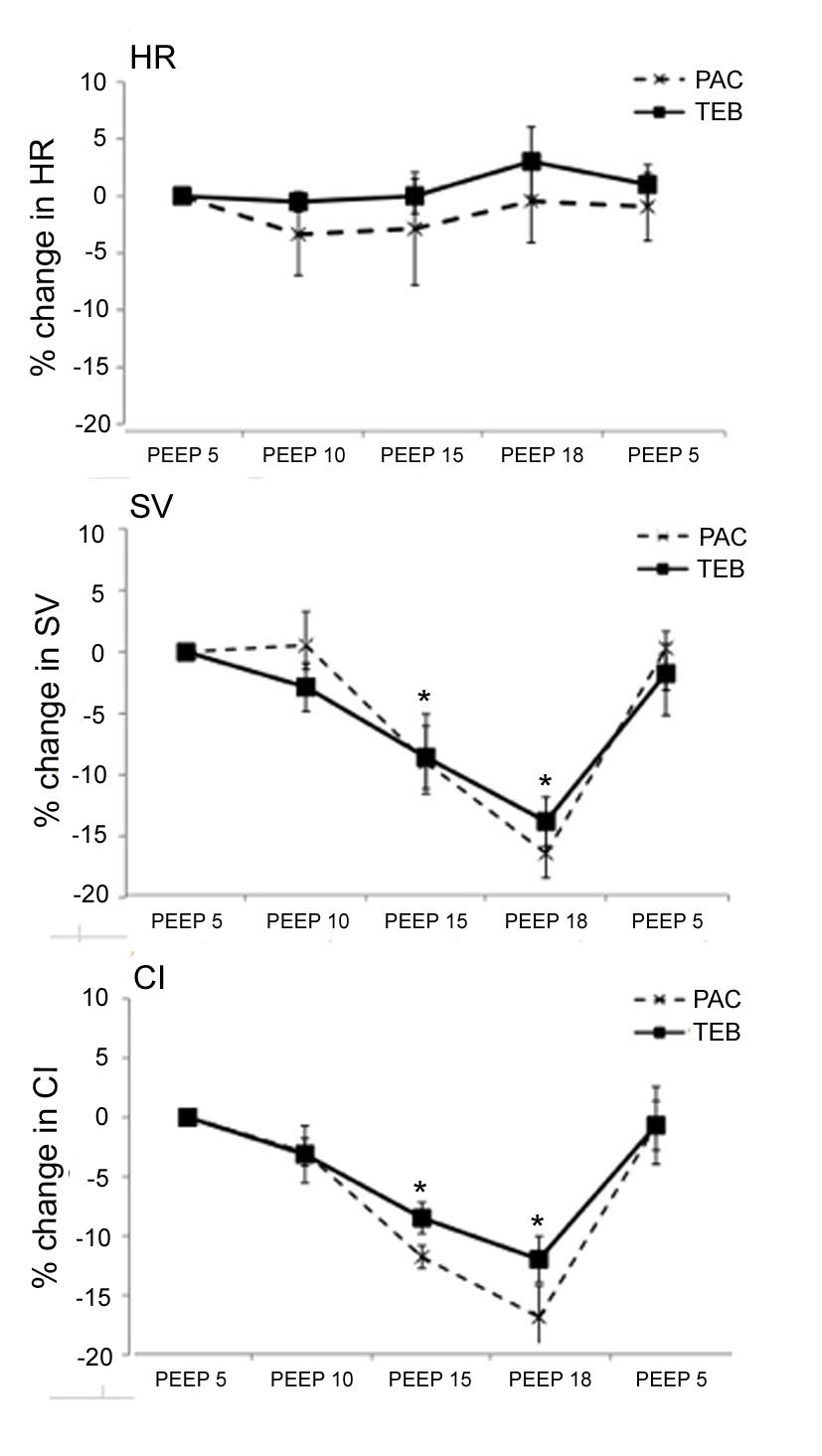
Figure 1. Numerical measurements of cardiac index with increasing PEEP as measured by PAC and TEB in post-operative cardiac surgery patients. PAC, pulmonary artery catheter; PEEP, positive end-expiratory pressure; TEB, transthoracic electrical bioimpedance.

Figure 2. Percentage change in hemodynamic parameters with increasing PEEP in post-operative CABG patients. PAC, pulmonary artery catheter; PEEP, positive end-expiratory pressure; TEB, transthoracic electrical bioimpedance.

Figure 3. Percentage change in hemodynamic parameters with CPAP administration. Max CPAP, maximal tolerated CPAP (12 cmH2O, 14 cmH2O, and 18 cmH2O in each respective patient); Min CPAP, minimal CPAP pressure reached before end of study (0 cmH2O, 0 cmH2O and 4 cmH2O for each respective patient).


